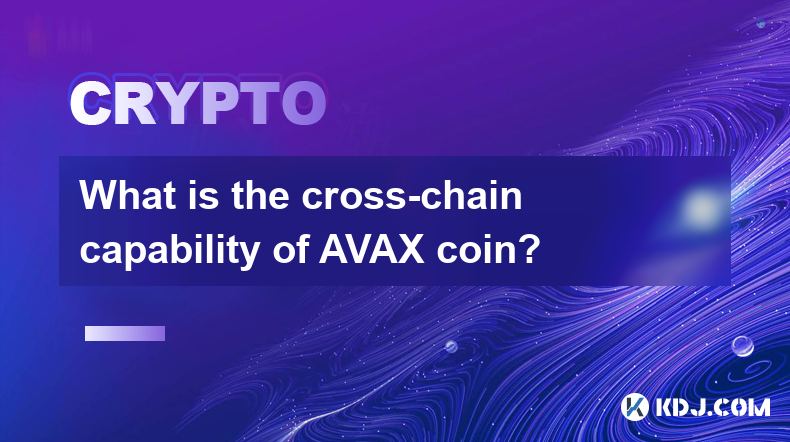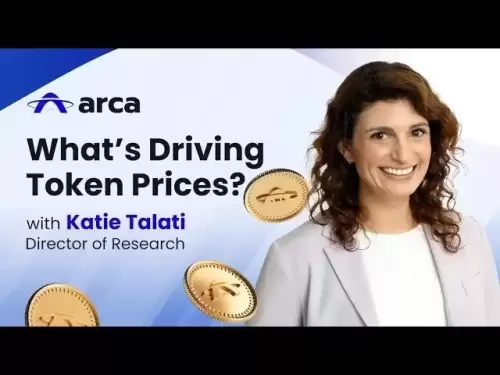-
 Bitcoin
Bitcoin $107,275.1551
-0.32% -
 Ethereum
Ethereum $2,485.3056
1.77% -
 Tether USDt
Tether USDt $1.0005
0.03% -
 XRP
XRP $2.2223
1.31% -
 BNB
BNB $657.7608
1.39% -
 Solana
Solana $156.3566
3.02% -
 USDC
USDC $0.9999
0.01% -
 TRON
TRON $0.2791
1.09% -
 Dogecoin
Dogecoin $0.1651
0.45% -
 Cardano
Cardano $0.5738
2.78% -
 Hyperliquid
Hyperliquid $40.2672
5.82% -
 Bitcoin Cash
Bitcoin Cash $517.5487
5.30% -
 Sui
Sui $2.7981
-0.40% -
 Chainlink
Chainlink $13.3500
-0.36% -
 UNUS SED LEO
UNUS SED LEO $9.1220
1.12% -
 Avalanche
Avalanche $17.9515
-0.32% -
 Stellar
Stellar $0.2361
-0.44% -
 Toncoin
Toncoin $2.9423
2.33% -
 Shiba Inu
Shiba Inu $0.0...01145
-0.68% -
 Litecoin
Litecoin $86.1693
-0.63% -
 Hedera
Hedera $0.1493
0.64% -
 Monero
Monero $315.1374
1.81% -
 Polkadot
Polkadot $3.4002
-0.73% -
 Dai
Dai $1.0001
0.03% -
 Bitget Token
Bitget Token $4.5413
-1.35% -
 Ethena USDe
Ethena USDe $1.0002
-0.01% -
 Uniswap
Uniswap $7.1733
-0.57% -
 Aave
Aave $274.0465
-0.23% -
 Pepe
Pepe $0.0...09810
2.24% -
 Pi
Pi $0.5101
-3.10%
What is the cross-chain capability of AVAX coin?
Avalanche's (AVAX) cross-chain functionality, powered by its unique architecture and Subnet system, enables secure, swift asset transfers between various blockchains via its native AVAX token and the Avalanche Virtual Machine (AVM).
Mar 13, 2025 at 04:31 pm

Key Points:
- Avalanche's cross-chain capability stems from its unique architecture, employing a novel consensus mechanism and subnet design.
- AVAX facilitates interoperability through Subnets, allowing various blockchains to interact securely and efficiently.
- The platform supports the creation of custom blockchains, enhancing its flexibility and scalability for cross-chain operations.
- AVAX's cross-chain transfer mechanism ensures secure and swift movement of assets between different blockchains.
- Understanding the role of the Avalanche Virtual Machine (AVM) is crucial to grasping its cross-chain functionality.
What is the cross-chain capability of AVAX coin?
Avalanche (AVAX) boasts a robust cross-chain capability, a crucial feature in the ever-evolving cryptocurrency landscape. Unlike many blockchains that operate in isolation, Avalanche is designed from the ground up to enable seamless interaction between different blockchains. This is achieved through a combination of innovative technological solutions. This interoperability is a key factor contributing to AVAX's popularity and potential.
The core of Avalanche's cross-chain functionality lies in its architecture. It utilizes a novel consensus mechanism, Avalanche consensus, which allows for fast and efficient transaction finality. This speed is critical for facilitating rapid cross-chain transfers without compromising security. The low latency of transactions is a key advantage for various decentralized applications (dApps) that rely on interoperability.
Avalanche's Subnets are the backbone of its cross-chain capabilities. Subnets are essentially custom blockchains that can be created and tailored to specific needs. These Subnets can be public, private, or even permissioned, providing flexibility for various use cases. The ability to create customized Subnets allows for a high degree of scalability and efficiency in managing cross-chain interactions.
The process of building and deploying a Subnet on Avalanche involves several steps.
- Define the subnet's purpose and specifications: This includes determining the consensus mechanism, validator set, and any specific functionalities.
- Establish the subnet's governance model: This outlines how the subnet will be managed and governed.
- Deploy the subnet's smart contracts: These contracts will govern the interactions and functionalities within the subnet.
- Connect the subnet to the Avalanche mainnet: This step integrates the subnet into the broader Avalanche ecosystem, enabling cross-chain communication.
These steps allow for the creation of specialized blockchains within the larger Avalanche ecosystem, each capable of interacting with others through the AVAX token. This is a key differentiator for Avalanche, offering a level of customization not found in many other platforms.
The Avalanche Virtual Machine (AVM) plays a vital role in facilitating cross-chain transactions. The AVM is a powerful execution environment that supports the execution of smart contracts written in various programming languages. This ensures compatibility and interoperability with different blockchains and dApps built on them. Its robust design ensures security and efficiency in executing complex cross-chain operations.
AVAX, the native token of the Avalanche network, serves as the primary medium of exchange for cross-chain transactions. It facilitates the transfer of value and data between different Subnets and even other blockchains integrated with Avalanche. The ease and speed of these transactions contribute to the platform's attractiveness for developers and users alike.
The security of cross-chain transactions on Avalanche is paramount. The platform employs a multi-layered security model to protect against various threats, including attacks on the consensus mechanism and vulnerabilities in smart contracts. The rigorous security measures contribute to the overall reliability and trustworthiness of the platform.
The scalability of Avalanche's cross-chain solution is another key advantage. The ability to create and manage numerous Subnets, each optimized for specific purposes, allows the platform to handle a large volume of cross-chain transactions without compromising performance. This high throughput is essential for supporting a growing ecosystem of dApps and users.
AVAX's cross-chain capabilities extend beyond simply transferring tokens. It allows for the transfer of complex data structures and even entire applications between different blockchains. This opens up exciting possibilities for the development of decentralized applications that leverage the strengths of multiple blockchain networks. This level of interoperability significantly broadens the potential applications of blockchain technology.
Frequently Asked Questions:
Q: How does AVAX ensure the security of cross-chain transactions?
A: Avalanche utilizes a multi-layered security model encompassing its consensus mechanism, smart contract security audits, and validator node security protocols. This ensures the integrity and safety of cross-chain transfers.
Q: What are the limitations of AVAX's cross-chain capabilities?
A: While highly capable, limitations might arise from complexities in integrating with blockchains using vastly different consensus mechanisms or technical architectures. Interoperability may not be seamless with every existing blockchain.
Q: How does the Avalanche subnet system enhance cross-chain functionality?
A: Subnets provide a modular approach, allowing for custom blockchain configurations optimized for specific use cases. This improves scalability and enables efficient management of diverse cross-chain interactions.
Q: Can any blockchain connect to the Avalanche network for cross-chain interactions?
A: While Avalanche aims for broad interoperability, successful integration depends on technical compatibility and the willingness of other blockchain projects to establish the necessary bridges and protocols.
Q: What is the role of the AVAX token in cross-chain transactions?
A: AVAX serves as the primary medium of exchange and also plays a role in securing and governing the Avalanche network, including its various subnets, facilitating cross-chain transactions.
Disclaimer:info@kdj.com
The information provided is not trading advice. kdj.com does not assume any responsibility for any investments made based on the information provided in this article. Cryptocurrencies are highly volatile and it is highly recommended that you invest with caution after thorough research!
If you believe that the content used on this website infringes your copyright, please contact us immediately (info@kdj.com) and we will delete it promptly.
- Coinbase, Altcoins, and Listings: What's the Buzz?
- 2025-07-01 00:30:11
- Chainlink's Bullish Signals: Investors Bet on Long-Term Value
- 2025-07-01 00:50:12
- CICADA Finance Soars on BNB Chain: A TGE Deep Dive
- 2025-07-01 01:30:11
- MicroStrategy's Bitcoin Bet: Holdings, Sell-Off Concerns, and S&P 500 Dreams
- 2025-07-01 01:30:11
- XRPL EVM Sidechain: Ethereum dApps Unleashed on XRP Ledger!
- 2025-07-01 01:35:11
- Bybit, Kraken, and Tokenized Stocks: A New Era for Trading?
- 2025-07-01 00:30:11
Related knowledge

How to customize USDT TRC20 mining fees? Flexible adjustment tutorial
Jun 13,2025 at 01:42am
Understanding USDT TRC20 Mining FeesMining fees on the TRON (TRC20) network are essential for processing transactions. Unlike Bitcoin or Ethereum, where miners directly validate transactions, TRON uses a delegated proof-of-stake (DPoS) mechanism. However, users still need to pay bandwidth and energy fees, which are collectively referred to as 'mining fe...

USDT TRC20 transaction is stuck? Solution summary
Jun 14,2025 at 11:15pm
Understanding USDT TRC20 TransactionsWhen users mention that a USDT TRC20 transaction is stuck, they typically refer to a situation where the transfer of Tether (USDT) on the TRON blockchain has not been confirmed for an extended period. This issue may arise due to various reasons such as network congestion, insufficient transaction fees, or wallet-rela...

How to cancel USDT TRC20 unconfirmed transactions? Operation guide
Jun 13,2025 at 11:01pm
Understanding USDT TRC20 Unconfirmed TransactionsWhen dealing with USDT TRC20 transactions, it’s crucial to understand what an unconfirmed transaction means. An unconfirmed transaction is one that has been broadcasted to the blockchain network but hasn’t yet been included in a block. This typically occurs due to low transaction fees or network congestio...

How to check USDT TRC20 balance? Introduction to multiple query methods
Jun 21,2025 at 02:42am
Understanding USDT TRC20 and Its ImportanceUSDT (Tether) is one of the most widely used stablecoins in the cryptocurrency market. It exists on multiple blockchain networks, including TRC20, which operates on the Tron (TRX) network. Checking your USDT TRC20 balance accurately is crucial for users who hold or transact with this asset. Whether you're sendi...

What to do if USDT TRC20 transfers are congested? Speed up trading skills
Jun 13,2025 at 09:56am
Understanding USDT TRC20 Transfer CongestionWhen transferring USDT TRC20, users may occasionally experience delays or congestion. This typically occurs due to network overload on the TRON blockchain, which hosts the TRC20 version of Tether. Unlike the ERC20 variant (which runs on Ethereum), TRC20 transactions are generally faster and cheaper, but during...

The relationship between USDT TRC20 and TRON chain: technical background analysis
Jun 12,2025 at 01:28pm
What is USDT TRC20?USDT TRC20 refers to the Tether (USDT) token issued on the TRON blockchain using the TRC-20 standard. Unlike the more commonly known ERC-20 version of USDT (which runs on Ethereum), the TRC-20 variant leverages the TRON network's infrastructure for faster and cheaper transactions. The emergence of this version came as part of Tether’s...

How to customize USDT TRC20 mining fees? Flexible adjustment tutorial
Jun 13,2025 at 01:42am
Understanding USDT TRC20 Mining FeesMining fees on the TRON (TRC20) network are essential for processing transactions. Unlike Bitcoin or Ethereum, where miners directly validate transactions, TRON uses a delegated proof-of-stake (DPoS) mechanism. However, users still need to pay bandwidth and energy fees, which are collectively referred to as 'mining fe...

USDT TRC20 transaction is stuck? Solution summary
Jun 14,2025 at 11:15pm
Understanding USDT TRC20 TransactionsWhen users mention that a USDT TRC20 transaction is stuck, they typically refer to a situation where the transfer of Tether (USDT) on the TRON blockchain has not been confirmed for an extended period. This issue may arise due to various reasons such as network congestion, insufficient transaction fees, or wallet-rela...

How to cancel USDT TRC20 unconfirmed transactions? Operation guide
Jun 13,2025 at 11:01pm
Understanding USDT TRC20 Unconfirmed TransactionsWhen dealing with USDT TRC20 transactions, it’s crucial to understand what an unconfirmed transaction means. An unconfirmed transaction is one that has been broadcasted to the blockchain network but hasn’t yet been included in a block. This typically occurs due to low transaction fees or network congestio...

How to check USDT TRC20 balance? Introduction to multiple query methods
Jun 21,2025 at 02:42am
Understanding USDT TRC20 and Its ImportanceUSDT (Tether) is one of the most widely used stablecoins in the cryptocurrency market. It exists on multiple blockchain networks, including TRC20, which operates on the Tron (TRX) network. Checking your USDT TRC20 balance accurately is crucial for users who hold or transact with this asset. Whether you're sendi...

What to do if USDT TRC20 transfers are congested? Speed up trading skills
Jun 13,2025 at 09:56am
Understanding USDT TRC20 Transfer CongestionWhen transferring USDT TRC20, users may occasionally experience delays or congestion. This typically occurs due to network overload on the TRON blockchain, which hosts the TRC20 version of Tether. Unlike the ERC20 variant (which runs on Ethereum), TRC20 transactions are generally faster and cheaper, but during...

The relationship between USDT TRC20 and TRON chain: technical background analysis
Jun 12,2025 at 01:28pm
What is USDT TRC20?USDT TRC20 refers to the Tether (USDT) token issued on the TRON blockchain using the TRC-20 standard. Unlike the more commonly known ERC-20 version of USDT (which runs on Ethereum), the TRC-20 variant leverages the TRON network's infrastructure for faster and cheaper transactions. The emergence of this version came as part of Tether’s...
See all articles

























































































